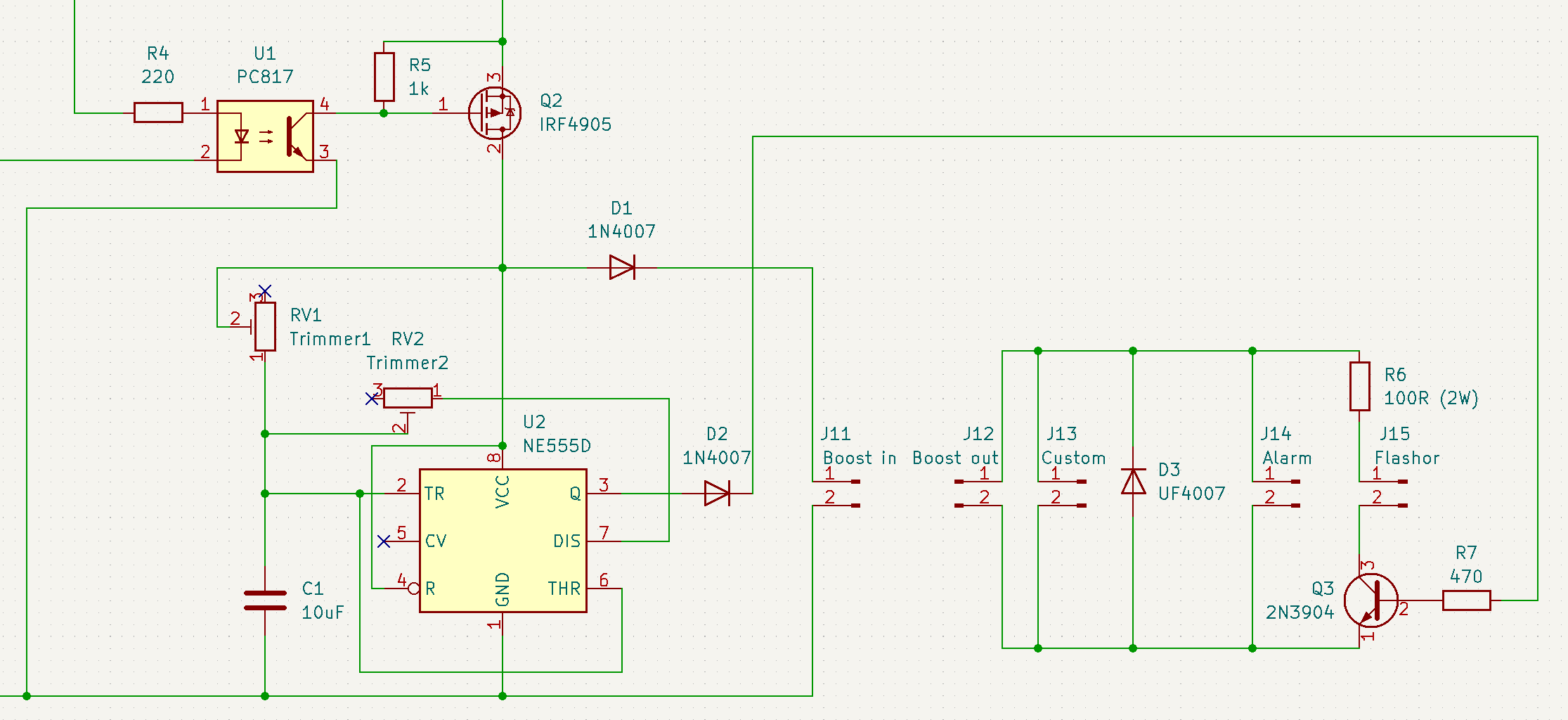I am trying to control a 24V load with a 5V Arduino pin. I once burnt an Arduino but couldn't find why. I am extra cautious now.
My new design:
On the left side of R4 there is an Arduino pin. On the source side of the IRF4905 is the main power source which is 9V. As you see I didn't leave anything to luck and I used an optocoupler and diodes to prevent any bad outcome. I am afraid of the 24V boost out (J12) killing my Arduino or 555 timer. The boost converter is an SX1308 module.
Back in the day I switched the whole timer and boost converter with a N-MOSFET from the gate (pin7 in the picture below) but somehow Arduino was burnt.
My old design:
Several questions came to my mind about my new design:
- I think D1 and D2 are unnecessary. Can I remove them? They are to prevent any reverse current (as far as I know there shouldn't be any.)
- Is positive side switching is better than negative? I am using a P MOSFET here as you see.
- Can I use an NPN transistor instead of an optocoupler to pull the gate of the P MOSFET to zero volts? (Theoretically it must be yes.)
I am open to any advice for switching DC converters on and off. They have pins to turn on and off but I don't want any standby current when the system is battery operated. Also if I buy them as modules they don't have those pins.


